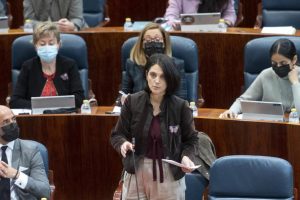“What I’m most proud of is having achieved the numbers, but in the right way”
September 8 () –
Ana Botín will celebrate a decade at the helm of Banco Santander as its executive president this Tuesday, after having held various positions of responsibility in the previous 25 years and succeeding her father, Emilio Botín, following his unexpected death.
The director stressed during an interview published by the entity this Saturday that the first “great international leap” of the bank was made by her grandfather, who was president between 1950 and 1986. “At that time, in the fifties and sixties, there was a great expansion, but that expansion was also consolidated and was not only national, but also international,” Botín explained.
“During my father’s time, there was more expansion, even faster. We became the first bank in the eurozone, the first bank in Spain, and we made a lot of acquisitions,” he recalled.
In 2014, Banco Santander recorded profits of 5.816 billion euros, while the forecast for this year is to exceed 12 billion euros. In addition, the bank has gone from having around 60 million customers to more than 168 million.
The performance of the stock in this decade has registered a decline of around 10%, taking into account the distribution of dividends that the bank has been making. During these first 10 years of Ana Botín at the head of the bank there was also a period of eight years in which the interest rates of the European Central Bank were in negative territory, affecting the banking business.
Before taking up any position at Banco Santander, the bank’s president worked for JP Morgan in New York for eight years (1980-1988). She then joined the board in 1989.
In 1992, she became CEO and spent the next six years leading the bank’s expansion into Latin America. After the acquisition of Banesto, Botín became CEO of the bank.
Ana Botín continued to gain experience at the bank, serving as CEO of Santander UK between 2010 and 2014, after which she assumed the presidency of the bank.
Botín is a member of the board of directors of The Coca-Cola Company and is president of the Institute of International Finance (IIF).
HAS IMPROVED THE ENTITY’S METRICS
Botín’s decade at Santander can also be seen in the bank’s credit quality metrics. In 2014, the bank closed the year with a return on equity (RoE) of 7%, compared to 12.6% today. The CET1 capital ratio was also 9.7%, compared to 12.5%.
Furthermore, despite the increase in the number of shares in circulation, affected among other things by the acquisition of Banco Popular after its liquidation, the bank now has 286,000 more shareholders (up to 3.5 million), as well as some 24,000 more employees, for a total of almost 210,000 people. The number of branches has been reduced by just over a third, to 8,285 branches.
“What I am most proud of is having achieved the numbers. But I always say it in the right way,” Botín said during the interview published by the bank.
“When I am asked what the most difficult part of my job is, in the end it is finding a balance between delivering today – doing the numbers, growing profits, growing customers – but also ensuring that we do it in a sustainable way,” he added.
BUSINESS AND MANAGEMENT EVOLUTION
In her first term as president, she decided to appoint José Antonio Álvarez as CEO and create the board of Santander Spain. She also changed the heads of all the important markets and appointed new presidents in the group’s subsidiaries.
After the first two years of his mandate, Botín promoted the strategic plan that Santander developed between 2016 and 2018, with the aim of accumulating capital until reaching 11% CET1. In terms of business, the bank has set itself the goal of being among the top three positions in customer satisfaction in all markets.
During this period, the bank also has to manage the crisis resulting from the United Kingdom’s decision to leave the European Union (Brexit). It is also deepening its digitalisation process with the relaunch of Openbank.
In addition, Banco Popular was rescued in 2017 through its acquisition by Banco Santander after the European authorities determined that it was unviable and that it had to be resolved. As part of the operation, Santander had to carry out a capital increase of 7 billion euros that would cover the capital and provisions required to strengthen Banco Popular’s balance sheet. Previously, Santander had purchased Banif in Portugal (2015) and the Citi subsidiary in Argentina (2016).
Botín’s term in office was also marked by the Covid-19 pandemic. During the crisis, the bank helped 250,000 clients in Spain through ICO lines, with financing worth 32.8 billion euros. During this period, the European Central Bank (ECB) also banned European banks from distributing dividends in view of the financial risks of the pandemic.
OPERATIONAL TRANSFORMATION
The Group’s operational transformation was completed last September, when the bank announced that it would begin structuring its business around five global businesses: Retail Banking, Digital Consumer Banking, Payments, Corporate and Investment Banking, and Wealth Management and Insurance.
Looking ahead, Botín will be in charge of launching Openbank in the United States and Mexico as president. “The digital bank will allow us to grow much faster in the American market. And this is something that really sets us apart and we have already shown that we are profitable,” Botín explained in the interview published on Saturday.
At the end of 2013, Spain only accounted for 7% of the group’s profits, compared to 23% for Brazil and 17% for the United Kingdom. Brexit and the cut in interest rates in the Eurozone made Latin American countries the main driving force of the group, while now, with a change in the monetary policy cycle, the Old Continent is once again the main generator of income and profits for Santander.










Add Comment